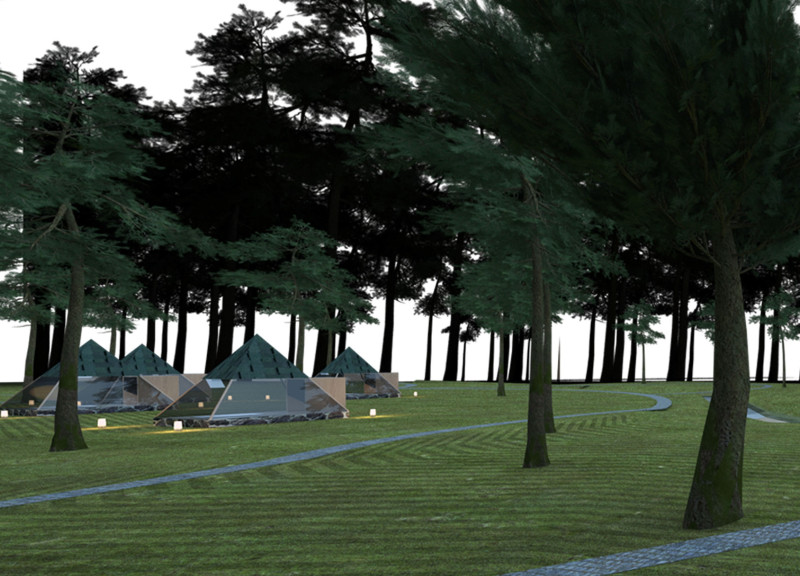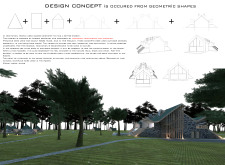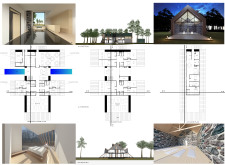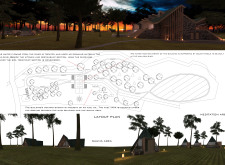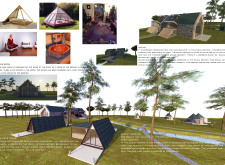5 key facts about this project
At its core, this project represents a sanctuary where users can retreat from their daily lives. It serves as a location for meditation practices, contemplation, and community gathering, fostering connections among individuals while nurturing individual experiences. The design intricately combines form and function, ensuring that each element contributes to the overall mission of enhancing personal well-being and spiritual connection.
The spatial organization of the project reveals a thoughtful arrangement of interconnected areas, each purposefully designed to support various aspects of relaxation and meditation. The meditation rooms are characterized by generous windows that invite an abundance of natural light, creating a serene atmosphere conducive to introspection. These rooms utilize natural materials such as stone and wood, emphasizing a relationship with the surrounding environment while providing a sense of warmth and comfort.
A unique feature of the design is the dark room, which is specifically intended for enhancing focus and minimizing distractions during meditation sessions. The use of lighter wooden elements in this space adds a gentle warmth, ensuring that even in low-light conditions, the environment feels inviting. Additionally, the sauna and relaxation areas are thoughtfully separated from the main building, allowing for an immersive outdoor experience that complements the indoor meditation practices. Glass surfaces form a vital component of these areas, further merging the boundaries between inside and outside, and promoting a seamless interaction with nature.
Guest rooms within the project have been strategically located to offer both privacy and accessibility. They are designed to facilitate personal meditation sessions while also ensuring a sense of connection to communal activities. The architectural design incorporates natural hues and wooden flooring to create inviting interiors that resonate with the overall ethos of well-being.
Community spaces occupy a central role in promoting social connections among users. These areas encourage engagement and interaction, reinforcing the sense of shared purpose that the project aims to cultivate. Pathways meander through the landscaping, inviting exploration and contemplation of the surrounding natural beauty.
The choice of materials throughout the architecture plays a significant role in reinforcing the project's connection to nature. Stone provides structural strength and a sense of permanence, while wood infuses the interiors with a natural aesthetic and warmth. Glass, used extensively for its transparency and ability to create visual connections to the outdoors, embodies the design’s philosophy of openness and accessibility.
Unique design approaches are evident throughout the project, notably its commitment to sustainability. The architecture has been conceived with eco-friendly building practices in mind, incorporating systems for water recycling and utilizing solar panels to support heating needs. This commitment not only enhances the functionality of the building but also aligns with contemporary values of environmental responsibility.
The incorporation of sacred geometry into the design galvanizes the project’s spiritual dimension. Geometric forms, such as triangles and rectangles, serve not only as visual elements but also as embodiments of deeper philosophical significance. The resulting design encourages users to engage with the space in a way that fosters mindfulness and contemplation.
In this project, the thoughtful integration of architecture and nature, combined with a strong emphasis on sustainability and well-being, establishes it as an important contribution to contemporary architectural discussions. The holistic approach to design reflects a thoughtful consideration of how individuals interact with their environment, and how physical spaces can shape experiences. For those interested in deeper insights, exploring the architectural plans, sections, designs, and ideas of this project will provide a more comprehensive understanding of its unique attributes and the intentions behind its conception.


